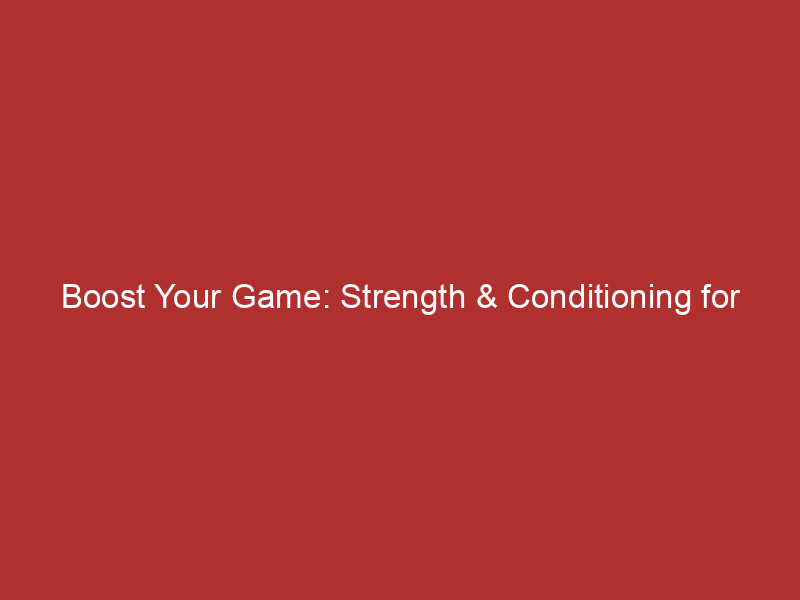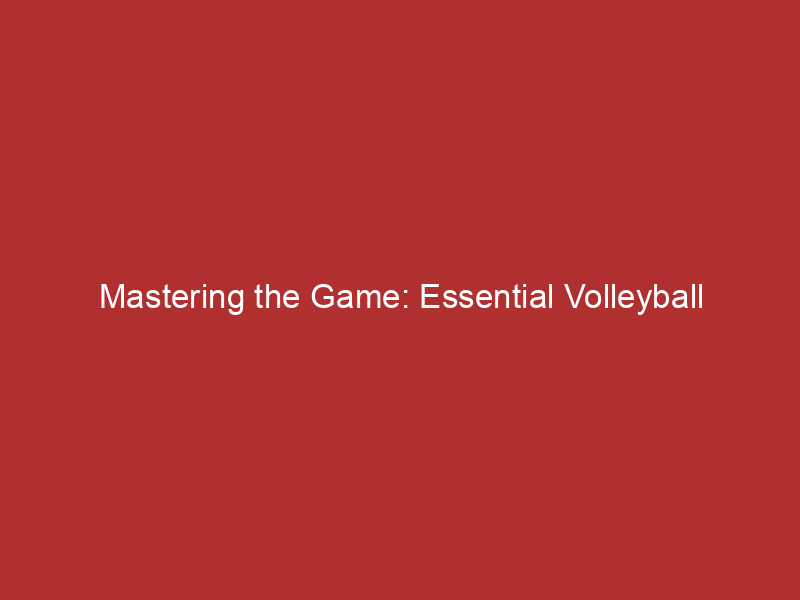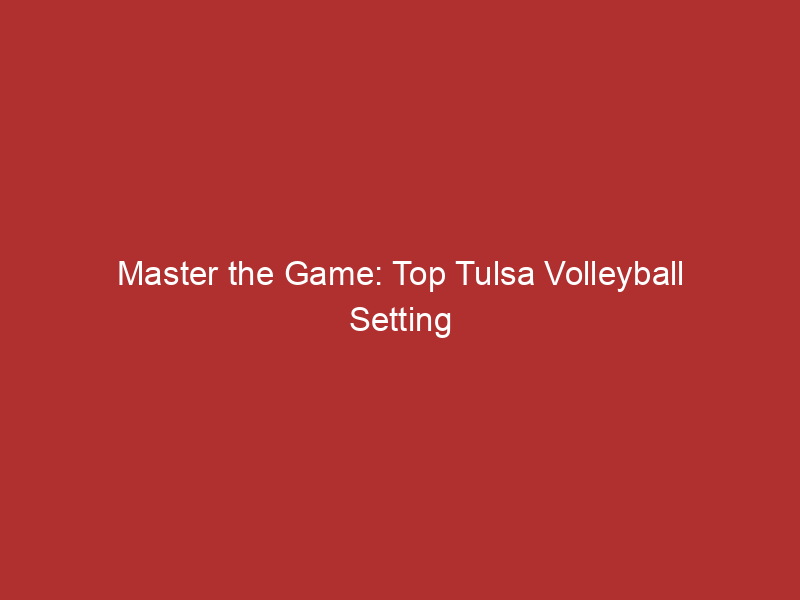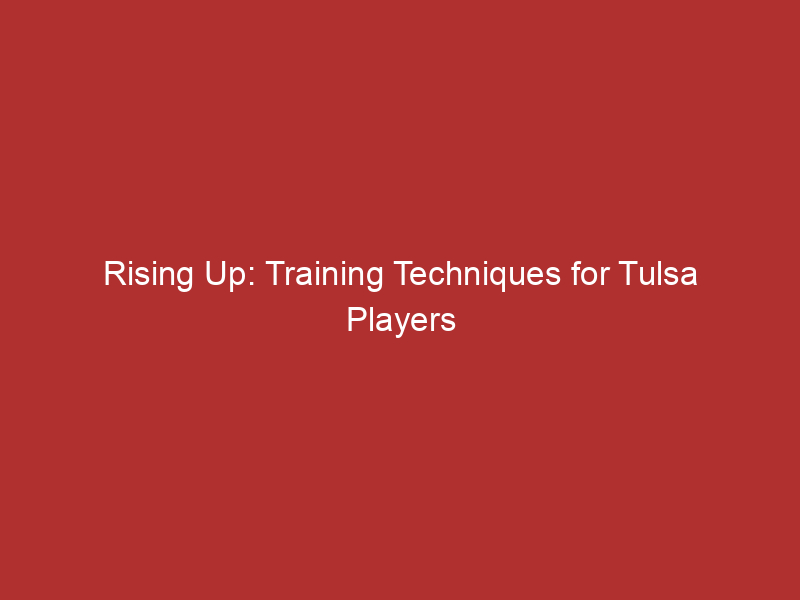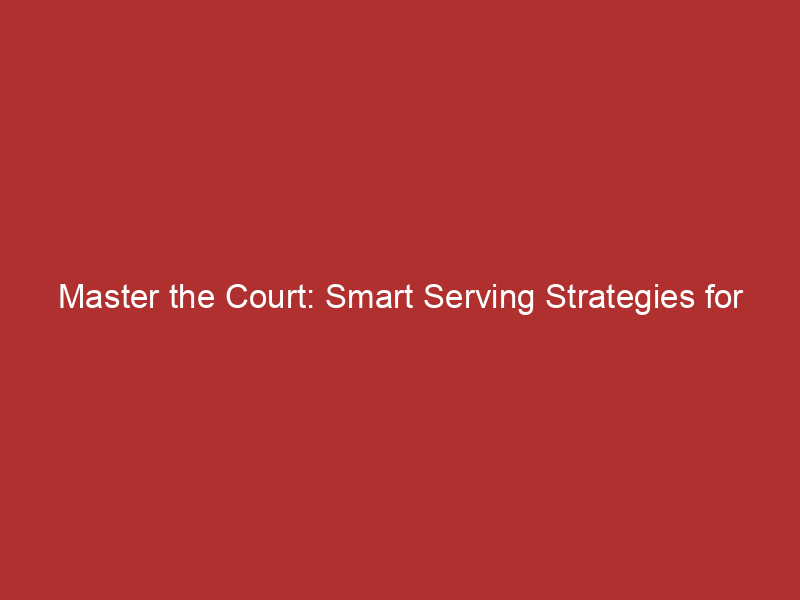Introduction to Strength & Conditioning for Tulsa Volleyball Teams
When it comes to volleyball, strength and conditioning play a vital role in enhancing performance and reducing the risk of injury. This is particularly true for the competitive volleyball teams in Tulsa, where the sport is taken seriously and the competition is fierce. In this article, we will delve into the importance of strength and conditioning for volleyball teams and provide an overview of how Tulsa volleyball teams train.
- The importance of strength and conditioning for volleyball teams
- Overview of Tulsa Volleyball Teams Training
Strength and conditioning are crucial for volleyball players to improve their game performance. Strength training helps players to hit harder, jump higher, and move faster, while conditioning exercises improve endurance, allowing players to maintain their performance level throughout the match. Moreover, a well-designed strength and conditioning program can help prevent injuries, which is particularly important in a sport like volleyball that involves frequent jumping and lateral movements.
Tulsa volleyball teams take their training seriously. The training regimen typically includes a mix of strength training, conditioning exercises, skill drills, and strategy sessions. Strength training often focuses on core and lower body strength, which are crucial for hitting and jumping. Conditioning exercises, on the other hand, are designed to improve cardiovascular fitness and endurance. Skill drills help players improve their serving, hitting, setting, and defensive skills, while strategy sessions are used to develop team strategies and improve team coordination.
In the following sections, we will delve deeper into the specifics of strength training and conditioning for volleyball, providing a comprehensive guide to volleyball team workouts. So, whether you’re a player looking to improve your game, a coach seeking to enhance your team’s performance, or a fan interested in understanding the game better, stay tuned!
Understanding the Basics of Strength Training for Volleyball
Strength training is an essential part of volleyball. It helps players improve their power, speed, and agility, which are all crucial for a successful game. But what does a volleyball fitness program entail? Let’s break it down into three key components.
Key Components of Volleyball Fitness Program
There are three main elements to a comprehensive volleyball fitness program. These are:
- Strength Training Exercises
- Conditioning Exercises
- Flexibility Exercises
These exercises are designed to build muscle mass and strength. They often involve lifting weights or using resistance bands. The goal is to increase the power and force that players can generate during a game. For example, a stronger arm can serve a ball faster and harder, making it more difficult for the opponent to return.
Conditioning exercises aim to improve cardiovascular fitness and endurance. This is important because volleyball games can last for an hour or more, and players need to maintain their energy levels throughout. Conditioning exercises might include running, cycling, or swimming.
Flexibility exercises help keep the muscles and joints flexible and agile. This is important for preventing injuries and improving performance. For example, a flexible player might be able to reach a ball that others can’t, giving their team an advantage. Flexibility exercises often involve stretching or yoga.
By incorporating these three components into their training, volleyball players can improve their overall performance and reduce the risk of injury. Remember, a well-rounded fitness program is the key to success in volleyball.
Strength Exercises for Volleyball
Strength training is a key part of a volleyball player’s fitness program. It helps to increase power, speed, and agility, which are all crucial for performing well in the game. Here are some effective strength exercises that volleyball players can incorporate into their training routine:
- Weight Lifting
- Resistance Training
- Core Strengthening Exercises
Weight lifting is a great way to build muscle strength. It involves lifting weights to work different muscle groups. For volleyball players, it’s important to focus on exercises that strengthen the legs, arms, and shoulders. Squats, lunges, and bench presses are some examples of weight lifting exercises that can be beneficial.
Resistance training is another effective strength exercise for volleyball players. It involves using resistance bands or weights to strengthen and tone muscles. This type of training can help improve a player’s jumping ability and hitting power. Exercises like bicep curls, tricep extensions, and leg presses can be done with resistance bands or weights.
The core muscles play a crucial role in volleyball. They help with balance, stability, and power in movements like jumping, hitting, and serving. Core strengthening exercises like planks, sit-ups, and Russian twists can help improve these skills.
Remember, it’s important to perform these exercises with proper form to avoid injury. Always warm up before starting your workout and cool down afterwards. And don’t forget to hydrate!
By incorporating these strength exercises into your training routine, you can improve your performance on the volleyball court and reduce the risk of injury. So, get started today and see the difference it can make in your game!
Conditioning for Volleyball Teams
Conditioning is a crucial part of volleyball training. It enhances the players’ performance and reduces the risk of injuries. Let’s take a closer look at a case study involving a volleyball team from Tulsa.
Tulsa Volleyball Conditioning: A Case Study
This case study focuses on the conditioning program implemented by a volleyball team in Tulsa. We will discuss the program’s details, the results it yielded, and the key takeaways that can be applied to other teams.
- Overview of the conditioning program
- Results achieved by the team
- Key takeaways from the case study
The conditioning program for the Tulsa volleyball team was designed to improve the players’ strength, agility, and endurance. It included a mix of cardiovascular exercises, agility drills, and endurance training. The program was conducted thrice a week, with each session lasting for about 90 minutes.
After implementing the conditioning program, the Tulsa team saw significant improvements. The players’ speed and agility increased by 20%, and their endurance levels improved by 30%. This enhanced performance contributed to the team’s success, as they won 80% of their matches following the implementation of the conditioning program.
The Tulsa case study highlights the importance of a well-structured conditioning program for volleyball teams. It shows that regular and systematic training can significantly improve the players’ performance. The key takeaways include the need for a balanced program that includes various types of exercises and the importance of consistency in training.
In conclusion, conditioning is an essential aspect of volleyball training. A well-designed program can help players improve their performance and achieve better results on the court.
Conditioning Exercises for Volleyball
Conditioning is an essential part of volleyball training. It helps players to perform better and reduces the risk of injury. Here are three key types of conditioning exercises that every volleyball player should incorporate into their training routine:
- Cardiovascular exercises
- Agility drills
- Endurance training
Cardiovascular exercises are crucial for volleyball players. They help to improve heart health and increase stamina. This means players can keep moving and keep their energy levels high throughout the game. Some examples of cardiovascular exercises include running, cycling, and swimming. Remember, it’s important to start slow and gradually increase the intensity of your workouts.
Agility is the ability to move quickly and easily. In volleyball, agility helps players to react quickly to the ball, change direction swiftly, and maintain balance. Agility drills, such as ladder drills and cone drills, can help to improve a player’s speed, quickness, and flexibility. These drills should be performed regularly for best results.
Endurance training is another key aspect of volleyball conditioning. It helps players to stay strong and keep going, even in the most challenging parts of the game. Endurance training can include long-distance running, circuit training, and high-intensity interval training (HIIT). It’s important to mix up your endurance training routines to keep them challenging and effective.
In conclusion, conditioning exercises are a vital part of volleyball training. They help players to stay fit, strong, and ready for action. So, whether you’re a beginner or a seasoned pro, make sure to include cardiovascular exercises, agility drills, and endurance training in your workout routine. Remember, consistency is key when it comes to conditioning. Keep training, keep improving, and you’ll see the results on the court!
Volleyball Team Workouts: A Comprehensive Guide
Team workouts are essential for any volleyball team aiming for success. They not only build strength but also foster teamwork and coordination. This guide will provide a practical approach to strength training specifically for Tulsa volleyball teams.
Tulsa Volleyball Strength Training: A Practical Approach
Strength training is a crucial part of volleyball team workouts. It helps players to improve their power, speed, and agility, which are all vital for performance on the court. Let’s explore how to design, implement, and monitor a strength training routine for your team.
- Designing a strength training routine
- Implementing the routine in team workouts
- Monitoring progress and making adjustments
Designing a strength training routine requires understanding the specific needs of volleyball players. The routine should focus on enhancing core strength, lower body power, and upper body strength. Exercises like squats, lunges, push-ups, and planks can be included in the routine. It’s also important to include rest days for muscle recovery.
Once the routine is designed, the next step is implementation. Start with a warm-up session to prepare the body for the workout. Then, proceed with the strength training exercises. Ensure that each player is performing the exercises correctly to avoid injuries. End the session with a cool-down period to help the body recover.
Monitoring progress is crucial to ensure the effectiveness of the strength training routine. Keep track of each player’s performance and make adjustments as needed. If a player is struggling with a particular exercise, modify it to suit their ability. Remember, the goal is to improve, not to push beyond limits.
In conclusion, a well-designed and implemented strength training routine can significantly improve a volleyball team’s performance. It’s all about understanding the needs of the players, implementing the routine effectively, and making adjustments based on progress. So, get started with your team’s strength training today and see the difference it makes on the court!
Volleyball Strength and Conditioning Program: Key Considerations
When designing a strength and conditioning program for volleyball, it’s crucial to consider several factors. These considerations will ensure that the program is effective and beneficial for all players. Let’s delve into these key considerations:
- Individual Player Needs and Goals
- Team Goals and Objectives
- Seasonal Considerations
Every player on a volleyball team has unique strengths, weaknesses, and goals. A good strength and conditioning program should be tailored to meet these individual needs. For instance, a player who needs to improve their jumping ability might focus more on plyometric exercises, while another player who wants to increase their endurance might spend more time on cardio workouts. It’s essential to understand each player’s needs and goals to create a program that helps them improve and succeed.
While individual player needs are important, the team’s overall goals and objectives should also be a key consideration. The strength and conditioning program should align with these goals. For example, if the team’s objective is to improve their blocking ability, the program might include more strength training exercises that target the upper body. Similarly, if the team’s goal is to increase their speed on the court, the program might incorporate more agility and quickness drills.
The time of the year can also impact the design of a strength and conditioning program. In the pre-season, the focus might be on building strength and endurance. During the season, the emphasis might shift to maintaining fitness levels and preventing injuries. And in the off-season, players might focus on recovering and preparing for the next season. It’s crucial to adjust the program based on these seasonal considerations to ensure players are at their best when it counts.
Conclusion: Boost Your Game with Effective Training
As we wrap up this comprehensive guide, it’s essential to revisit the key points and understand how effective training can significantly boost your volleyball game.
- Recap of the importance of strength and conditioning for volleyball:
- Final thoughts on Tulsa Volleyball Teams Training:
Strength and conditioning are the cornerstone of any successful volleyball player’s training regimen. They not only enhance your physical prowess but also improve your agility, speed, and endurance on the court. Remember, a well-conditioned athlete can outperform and outlast their less prepared opponents.
Tulsa Volleyball Teams have consistently shown the positive impact of a well-structured strength and conditioning program. Their success is a testament to the power of effective training. It’s not just about working hard; it’s about working smart. By focusing on the right exercises and maintaining a balanced training routine, any team or player can reach their peak performance.
In conclusion, strength and conditioning training are not optional extras but essential components of volleyball training. Whether you’re a beginner or an experienced player, integrating these elements into your routine can significantly enhance your performance and longevity in the sport. Remember, the key to success in volleyball, as in any sport, lies in consistent, focused, and intelligent training.

